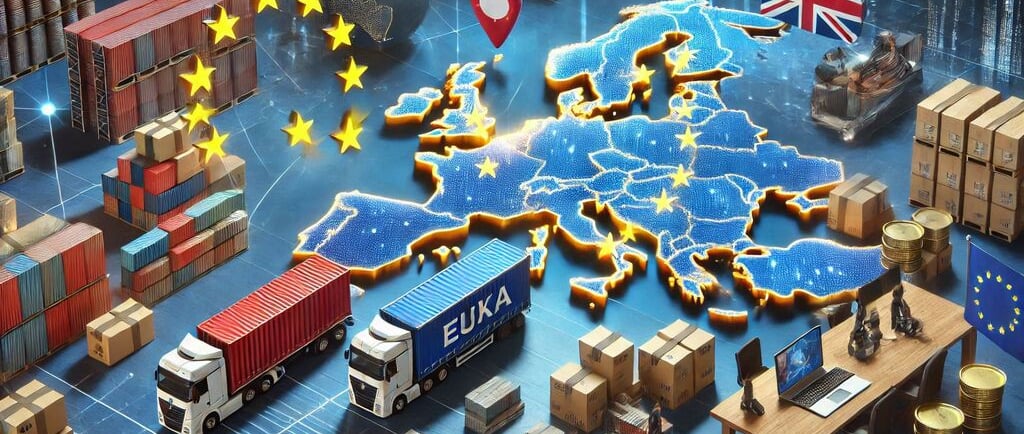Let us collaborate to foster global growth and development together.
Understanding the Impact of EU Regulations on Product Importation
Navigate EU import regulations with ease. Learn how European policies shape global trade, compliance requirements, and strategies for seamless product importation.
10/31/20243 min read


[Understanding the Impact of EU Regulations on Product Importation]
Meta Description: Navigate EU import regulations with ease. Learn how European policies shape global trade, compliance requirements, and strategies for seamless product importation.
Why EU Regulations Matter in Product Importation
If your business involves importing products into the European Union, understanding EU regulations is a game-changer. With its robust framework of laws and standards, the EU ensures the safety, quality, and sustainability of products entering its market. However, these rules can be complex, impacting timelines, costs, and compliance strategies for importers.
To help you stay on track, let’s delve into the essentials of EU product import regulations, their implications, and actionable steps to streamline your processes.
Key EU Regulations Impacting Importation
1. CE Marking Requirements
One of the most recognized symbols of compliance in the EU is the CE mark. It signifies that a product meets the essential safety, health, and environmental protection standards required for market entry.
Applicable Products: Electronics, machinery, medical devices, and toys, among others.
How to Comply: Importers must verify that manufacturers provide complete technical documentation and a Declaration of Conformity.
Failing to meet CE marking requirements can lead to severe penalties, including fines and product recalls.
2. REACH Regulation
The Registration, Evaluation, Authorisation, and Restriction of Chemicals (REACH) regulation aims to protect human health and the environment by controlling hazardous substances.
Impacted Industries: Cosmetics, electronics, textiles, and plastics.
Key Requirements: Ensure imported products contain substances approved by the European Chemicals Agency (ECHA). Additionally, maintain transparent communication throughout your supply chain.
3. General Product Safety Directive (GPSD)
The GPSD mandates that all products, irrespective of their specific sector, must be safe for consumers. Non-compliance can result in product bans or liability lawsuits.
How Importers Can Adapt: Conduct regular safety tests and source products from trusted manufacturers who adhere to EU standards.
Navigating Customs and Tariffs
1. Tariff Classification
Every product imported into the EU is assigned a specific tariff code under the Harmonized System (HS). Accurate classification ensures you’re charged the correct duties.
Practical Tip: Use the EU’s TARIC database to determine applicable duties, taxes, and regulations.
2. Rules of Origin
To benefit from preferential trade agreements, products must meet the EU’s Rules of Origin requirements. Documentation such as a Certificate of Origin is essential to prove compliance.
3. VAT and Import Duties
Value Added Tax (VAT) applies to most imported goods. Rates vary by country, so verify local rules to avoid unexpected costs. Consider hiring a customs broker for smoother transactions.
Challenges Faced by Importers
1. Dynamic Regulatory Landscape
EU regulations evolve frequently, making it difficult to stay compliant without constant monitoring. For instance, updates to REACH or new sustainability policies can catch businesses off guard.
Solution: Subscribe to updates from reliable sources like the European Commission’s trade portal.
2. Supply Chain Complexity
Ensuring that all suppliers adhere to EU standards can be challenging, especially when dealing with multiple manufacturers from different countries.
Solution: Build long-term relationships with reliable suppliers and audit their processes periodically.
3. Documentation Errors
Incomplete or incorrect documentation can delay shipments or result in fines.
Solution: Use digital tools to automate documentation management, reducing the risk of human error.
Tips for Hassle-Free Compliance
1. Work with Industry Experts
Partnering with customs brokers, legal consultants, or compliance experts can simplify the complexities of EU regulations. These professionals help you navigate requirements and avoid costly mistakes.
2. Leverage Technology
Use tools like blockchain for traceability or AI-driven compliance platforms to manage supply chain data efficiently.
3. Stay Proactive
Rather than reacting to compliance challenges, adopt a proactive approach by:
Regularly reviewing regulatory updates.
Training your team on the latest requirements.
Conducting mock audits to identify and resolve gaps.
Case Study: How Compliance Boosted a Business’s Reputation
A mid-sized textile importer from Asia faced frequent shipment delays due to missing documentation. By investing in compliance software and hiring a regulatory expert, the company reduced errors by 80%. As a result, they not only avoided fines but also earned a reputation for reliability among EU buyers.
Conclusion: Embrace Compliance for Success
Understanding and adhering to EU regulations is non-negotiable for successful product importation. While the process may seem daunting, it’s also an opportunity to establish trust, ensure quality, and build long-lasting customer relationships.
Take the first step by auditing your current processes and aligning them with EU standards. Need more guidance? Check out our [Ultimate Guide to Global Import Compliance] or reach out to our expert consultants. Let us know your thoughts in the comments below!
Innovation
Cutting-edge solutions for industrial efficiency and productivity.
© 2024. All rights reserved.


